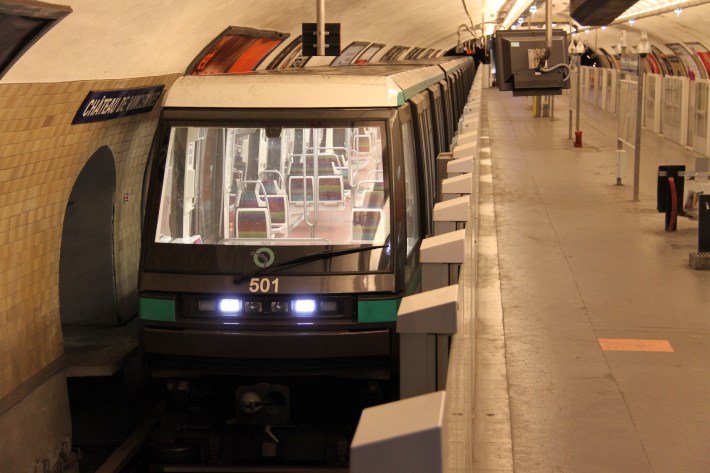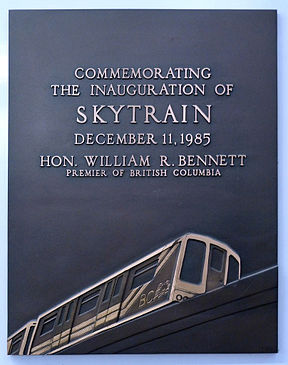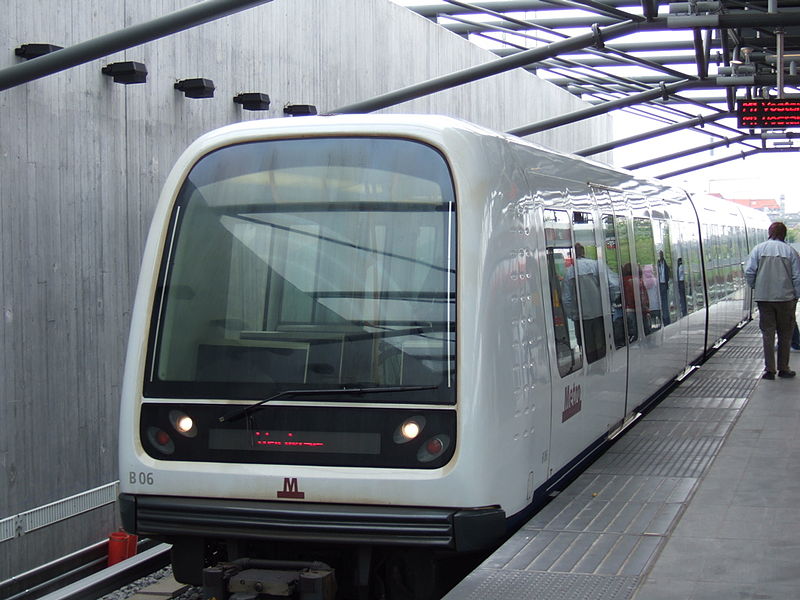BART ridership is down. That may seem hard to believe, given rush-hour overcrowding, but fewer people are riding BART off-peak, with a drop of nine percent on weekends. A recent KQED story looked at the numbers:
The district reported bringing in $480 million in fare revenue for fiscal 2015-16 and projected an increase of about 6 percent, to $510 million, for this fiscal year. BART financial staff now projects the agency will collect about $492 million in fares — $18 million less than forecast.
It's not hard to figure out what's going on with BART's off-peak ridership. Suppose you want to go from 24th and Mission to San Francisco International on a Sunday afternoon. The trip only takes 24 minutes by BART--about as long as it takes by car. The problem is, if you time it wrong, you can end up waiting another 20 minutes for a train. As Streetsblog explored in a previous post, to maximize transit ridership, service has to be utterly reliable and frequent--especially in the age of Uber and Lyft, one can't expect to be competitive with 20 minute headways on an urban metro system.
What if instead of BART running six-to-ten-car trains every 20 minutes at night and on weekends, it ran two-car trains every five minutes? That kind of frequency would make transit more competitive. The problem, of course, is labor costs--BART would lose money on the proposition, thanks to the additional drivers.
Everybody knows how to solve this problem.
Uber, Waymo and others are in the process of developing driverless car technology, while transit systems in the Bay Area continue to rely on one operator in the front of every single train (even though computers already drive BART trains--the operator is just opening and closing doors and acting as a backup).
Meanwhile, there are some 20 fully driverless, "GoA4" train systems (meaning there is no requirement to have an operator on board) throughout the world. Many have been in continuous operation for decades.
Citilab did an excellent breakdown of all the systems a few years ago. The advantages can't be overstated: better frequency, punctuality, reliability, capacity, and better fare-box recovery.
So why isn't BART, the transit system of the supposed tech capital of the world, actively pursuing the obvious technical solution to its ridership woes? "A higher level of automation at BART would benefit passengers by allowing more frequent trains," said BART director Robert Raburn. "I asked for a pilot project between Millbrae and SFO."
That will be a great start, if it actually happens. In Streetsblog's conversations with other transit officials, two reasons for resisting GoA4 are usually given.
One is safety. In an earlier interview with Streetsblog, Director Lateefah Simon said "When BART trains go under the Bay with hundreds of millions of pounds of water pressure above, I want to know there’s staff on those trains. We live on earthquake faults. We need trained people who understand disaster preparedness."
First of all, if the Transbay Tube rips open in an earthquake, it's hard to imagine what an on-board driver is going to do besides become another victim. Furthermore, if that's really the issue, backup safety "operators" with emergency training could simply ride back and forth between Embarcadero and West Oakland. The rest of the system could be operator free.
The other issue that's frequently brought up, and it's probably the bigger obstacle, is organized labor. "I don't believe the contract would even allow for this. An operator is required to run a train," wrote Alicia Trost, a BART spokeswoman, in an email to Streetsblog.
But union resistance is based on a false assumption: that automation means the drivers get canned. It doesn't.
Laurent Fortune is an engineer who managed the automation systems for Line 1 and Line 14 of the Paris Metro. Drivers weren't fired--in fact, they were promoted to "supervisor" or transferred to other areas. "There are still lots of humans around, they're just not at the front of the trains," said Fortune. He added that they are switched to places where "they're more useful." Additionally, these "supervisors" still have to be trained to drive the trains in an emergency, or to bring a train back to the shop if the automation on a particular train has failed.

That said, with full automation "you get around 30 percent more service, you have a better service with more trains all day long, because train operation is less costly," he said.
In other words, you don't fire operators, but you also don't have to hire more of them or pay overtime to run more trains, improve service, and increase revenue.
A GoA4 system is also far more dynamic. Fortune recalled a time there was an unexpected political demonstration around 2:30 in the morning. At the request of the police, the RATP (the Paris transit system) was able to keep the subway open and get the demonstrators home. As he explained, BART could never respond to a last-minute demonstration because you wouldn't get the operators in place "until the next morning," when it would no longer do any good. With a fully automated system, staffing is consistent in the control centers, regardless of how many trains are running.
In fact, Streetsblog confirmed that the Clipper system already maintains a count of how many people are entering and leaving BART at any given moment at any station. In a GoA4 system, that data could be fed into the operational computers, which could lengthen trains and/or send them more frequently as needed. And each train in an automated system carries more people, since there's no need for dedicated control cabs (usually there's a pop-up control counsel for emergencies in a GoA4 system).
There would be much work to do on BART to automate it fully and get rid of the human door operator. Many of the world's systems don't have platform doors throughout, but it would obviously be prudent to add platform doors/a barrier along the platform edge in BART's busiest stations. The trains would need object detection: computers that can stop the train in case someone or something fell onto the tracks, but, unlike driverless car tech, this is off-the-shelf, reliable and proven technology for trains.
BART's labor contract expires in 2021. It's not too soon for BART management and union leadership to figure out a way to get the one-train-one-operator clause out of the contract, perhaps by building in guarantees that drivers will not be fired. Then BART can start working on full automation. Because with Waymo and Uber's automated cars sure to come online soon, alternatives to BART are only going to get cheaper and more available, and BART's revenue issue is only going to get worse. BART has a responsibility to start solving this problem now--especially since the tools for doing it are already available.







